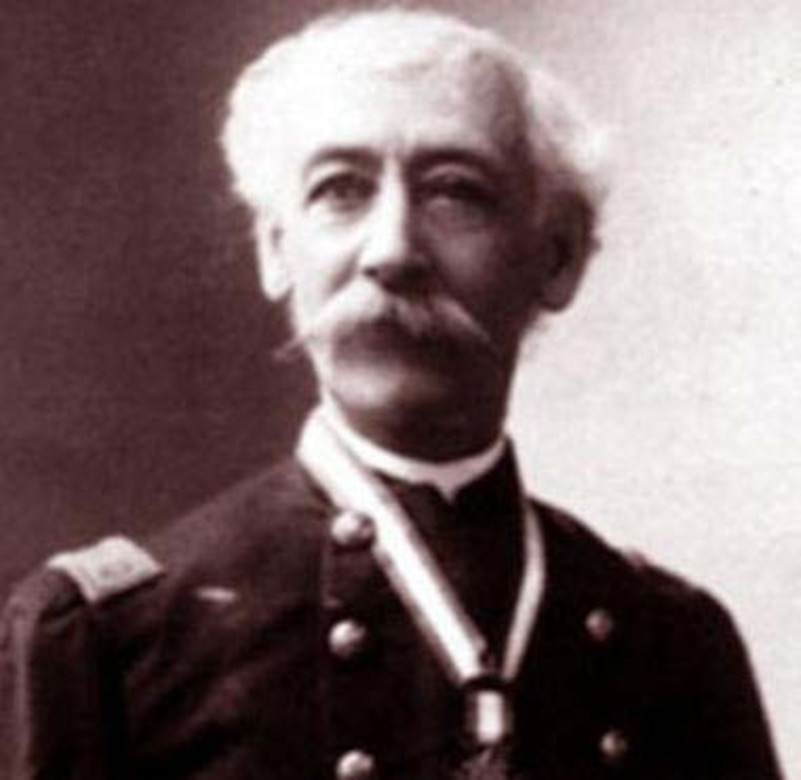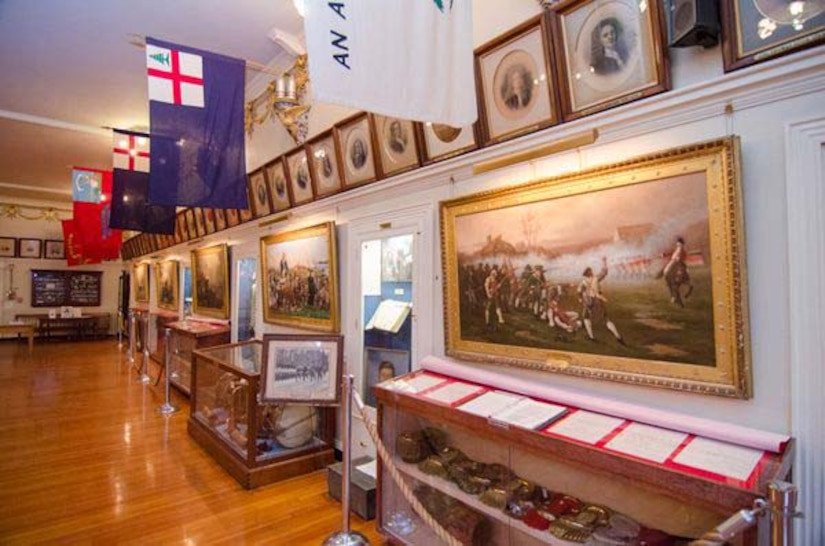The American Civil War, a defining period in US history, witnessed extraordinary acts of bravery, with nearly half of the Medal of Honor recipients – 1,522 individuals out of the total since 1861 – earning it during this conflict. Among these heroes was Private George Maynard of the Union Army. His unwavering commitment to his fellow soldiers, exemplified by his actions on the battlefield while wearing his Union Soldier Civil War Uniform, earned him the nation’s highest military honor. Maynard’s story is a testament to the courage and sacrifice embodied by the men who wore the blue uniform.
Born in 1836 in a Boston suburb, Maynard received a public school education until the age of 15 before apprenticing as a jeweler. He dedicated himself to this craft until he was 25, at which point the drums of war called him to service. With the onset of the Civil War, Maynard enlisted in the 13th Regiment Massachusetts Volunteer Infantry, stepping into the ranks of the Union Army and donning the iconic blue uniform that would soon become synonymous with the fight to preserve the nation.
[  Union Soldier in Civil War Uniform
Union Soldier in Civil War Uniform
](#pop3311770)
From Apprentice to Soldier: Maynard’s Early Military Service
The 13th Massachusetts was deployed to the Upper Potomac River region, patrolling the Maryland-Virginia border, a crucial area in the early stages of the war. Maynard and his fellow soldiers, clad in their Union soldier civil war uniforms, participated in several significant early battles, including the Second Battle of Bull Run, Chantilly, and Antietam. Antietam, in particular, remains etched in history as the single bloodiest day in American military history, a stark reminder of the brutal reality faced by soldiers on both sides of the conflict. These early engagements forged the 13th Regiment and hardened soldiers like Maynard, preparing them for the trials yet to come.
The Battle of Fredericksburg and an Act of Selfless Courage
In December 1862, Maynard’s regiment found itself crossing the Rappahannock River in preparation for the Battle of Fredericksburg. This battle is infamously known for its lopsided outcome, a resounding Confederate victory. The fighting at Slaughter Pen Farm was particularly intense, where Union forces initially broke through Confederate lines but were ultimately repulsed. Maynard’s regiment was at the forefront of the Union advance in this bloody sector.
During the chaotic ebb and flow of battle at Slaughter Pen Farm, as the main Union line retreated, Maynard’s company was ordered to fall back and regroup. It was then that Maynard realized a comrade, Charles Armstrong, was missing. Without hesitation for his own safety, Maynard turned back towards the thick of the fighting. Ignoring the dangers of enemy fire and the confusion of battle, Maynard ventured back into the fray, driven by the unwavering principle of leaving no man behind, a principle deeply ingrained in the ethos of the Union Army soldier.
[  Drawing of the Battle of Fredericksburg
Drawing of the Battle of Fredericksburg
](#pop3312211)
Against the odds, Maynard located the wounded Armstrong amidst the chaos. Under relentless enemy fire, Maynard managed to carry Armstrong from the battlefield to a Union field hospital. Despite Maynard’s courageous efforts, Armstrong succumbed to his injuries. Maynard’s selfless act, performed under extreme duress and in the heat of battle while wearing his Union soldier civil war uniform, exemplified the highest ideals of military service and camaraderie.
From Private to Major and the Medal of Honor
The 13th Massachusetts was mustered out of service in February 1863. Maynard briefly left the Army, but his commitment to the Union cause remained strong. In 1864, he re-enlisted, receiving a commission as a captain in the 82nd U.S. Colored Infantry. This regiment participated in the siege and battle of Fort Blakely, Alabama, further demonstrating Maynard’s continued dedication to the Union. Recognizing his consistent service and valor, Maynard was promoted to the rank of major approximately a year later.
Maynard concluded his military service permanently in September 1866 and returned to Boston. He built a life there, marrying and raising a family. Decades later, on March 20, 1898, the nation formally recognized his bravery at Fredericksburg, awarding him the Medal of Honor. This prestigious medal, awarded for his actions while in his Union soldier civil war uniform decades prior, cemented his place in American military history.
[  Civil War Museum Display
Civil War Museum Display
](#pop3311773)
A Lasting Legacy and a Uniform on Display
Major George Maynard lived a long life, passing away in 1927 at the age of 91. His legacy of courage and selflessness endures. Today, visitors to Boston’s Faneuil Hall can witness a tangible piece of his story: his Medal of Honor and his Union soldier civil war uniform are on display. Alongside these artifacts is a painting depicting his heroic actions at the Battle of Fredericksburg, ensuring that his bravery is remembered by generations to come.
In his retirement, Maynard remained active in the Ancient and Honorable Artillery Company of Massachusetts, the oldest chartered military organization in the United States. Even now, members of this organization honor his memory annually with a wreath-laying ceremony at his grave. George Maynard’s story, intrinsically linked to the Union soldier civil war uniform he wore and the Medal of Honor he earned, serves as a powerful reminder of the individual acts of courage that define the larger narratives of history and valor.

